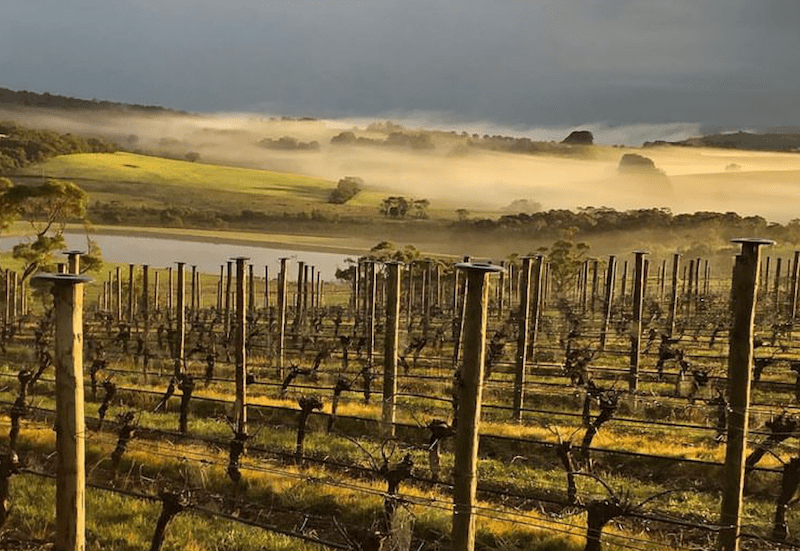
A distinctive attribute of fine wine is that it endures, reposes in cellars often long after the maker and collector have sipped their last, to re-emerge at family celebrations or in more mercenary circumstance at fine wine auction.
At the auction of a bottle of aged wine, it is not just the whim of the collector on the block, it is also part of a life story for the winemaker/vigneron who grew the grapes, made the wine and whose story enticed the purchaser into placing it carefully in their cellar.
By contrast, when a highly available and affordable bottle of branded commodity wine is purchased at the supermarket with the intent of consumption at dinner that night, not much thought is given to the vineyard source or the winemaker. The visibility, familiarity and affordability of the brand are the usual triggers of a spontaneous purchase.
A much more studied approach is adopted for the purchase of an expensive bottle of fine wine, especially if it is destined for the cellar.
Online reviews of the wine and website and printed descriptions of the source vineyard and the philosophy and techniques of the vigneron inform and pique curiosity.
Knowledgeable retail advice clinches the purchase, and the precious bottles are taken to the cellar to await the recommended years to the optimum drinking window.
Consumption of one bottle soon after purchase might inform a file note in the mind, or more formally in written word, that describes the wine when young and excites speculation about its destiny.
The appreciation of a well matured bottle of fine wine is a truly cerebral ritual, that relies on the recognition and recall of smell and taste and allows comparisons with other vineyards, vignerons and vintages.
For the aficionado, this can be an all-absorbing pastime, leading to visits to the region and vineyard and tastings and interviews with the vigneron.
Then there is the online search for specific vintages and the opportunity to purchase rare bottles at online auction.
On the other side of this connoisseur indulgence, is the vigneron, often in the Old World the inheritors of the vineyard, cellar and the story of the founding ancestors. Defenders of the faith, heritage and the “story”.
More often in the New World, the vigneron has personally chosen the region, varieties and vineyard site and determined the best way to grow the grapes and make the wine, sometimes in an untested viticultural location.
The New World vigneron constructs the story of the wine, honed and polished by experience, vintage by vintage. Where and how the grapes are grown, the varieties and clones, the major environmental influences in the vineyard, geology, soil and climate, the yield, the harvest window, the winery elaboration techniques, the type of oak and maturation time and finally the style and quality of the wine, these are the elements of the vigneron’s story.
The vigneron’s story will also include the ups and downs of commerce and fashion over the decades, the struggle for capital in this most capital intensive of businesses.
For the vigneron dedicated to their vineyard, the cost of production is the price of doing what it takes to grow and make the best wine possible. Hang the cost, whatever it takes! Whatever it takes becomes the story.
The opportunities to tell the story are legion, at trade exhibitions, visits to retailers and restaurateurs, interviews for magazines, books and websites and at consumer dinners and tastings.
These stories are authentic and therefore consistent, able to withstand the scrutiny of engaged consumers who demand explanations of even small changes detected in the narrative, between vintages.
The New World vigneron doesn’t need to rehearse the story, it is written indelibly in the memories, scars and bottles of each vintage, every one different to the vintages before and those to come.
Some of these small fine wine businesses fall prey to takeover by the large wine purveying corporates.
By dint of ownership, admittedly achieved probably at a high price paid to the vigneron, a small sum for the corporation, the corporation buys some or all the vineyards, winery, inventory including the museum stock, the brand and its story.
The corporation may decide not to use the story, instead creating some lifestyle promotional theme based on consumer research.
The label will inevitably change as frequently as the rotation of marketing executives.
Then as the story becomes diluted by new cheaper wines ranging across price points with the same branding, where the fruit is derived from cheaper vineyards, the authentic original wines from the original vineyards lose momentum in the marketplace.
The wines get written and talked about less, appear on prestigious wine lists less and sales decline and the price stagnates.
The corporation does what corporations do in these circumstances, they look to costs.
They close the small and inefficient original winery, lay off the people who helped build the original business and they centralise production, and make the range in a large industrial facility.
What then remains of the original story?
The original vineyards still survive but they now represent a smaller part of the commerce of the brand.
Now the grapes from the original vineyards disappear into the maw of a large industrial facility, each style made by a different winemaker responsible for numerous wines for different brands in a revolving work force.
Time on the bottling line in another enormous facility in another place is now counted in minutes for each of the parcels of original wine, minutes that used to take days in the original facility, using all the available labour from winery and vineyard.
What has been diluted if not lost in this transition is the original story.
That story and its evolution vintage by vintage, was as important to the fine wine collector as the style and quality of the wine itself.
The story as much as the wine and its presentation is why it reposed in a cellar for many years awaiting its eventual fate on a family dinner table or on an auction block.
Perhaps the corporation will eventually revert to the original story and in doing so acknowledge that all the marketing creativity assembled cannot replace the authentic story of a fine wine.













Great story and so true over the past 50 years.
A very interesting observation and well founded. The great winemakers are getting older, retired but surely not to be forgotten. The corporations, marketing executives are now determining what we drink, what we pay, and now the latest, alcohol levels. Personally, i look to speak with the winemaker, try and understand what they are attempting to achieve.This is a another important aspect of wine that s a important as taste,smell, and texture.